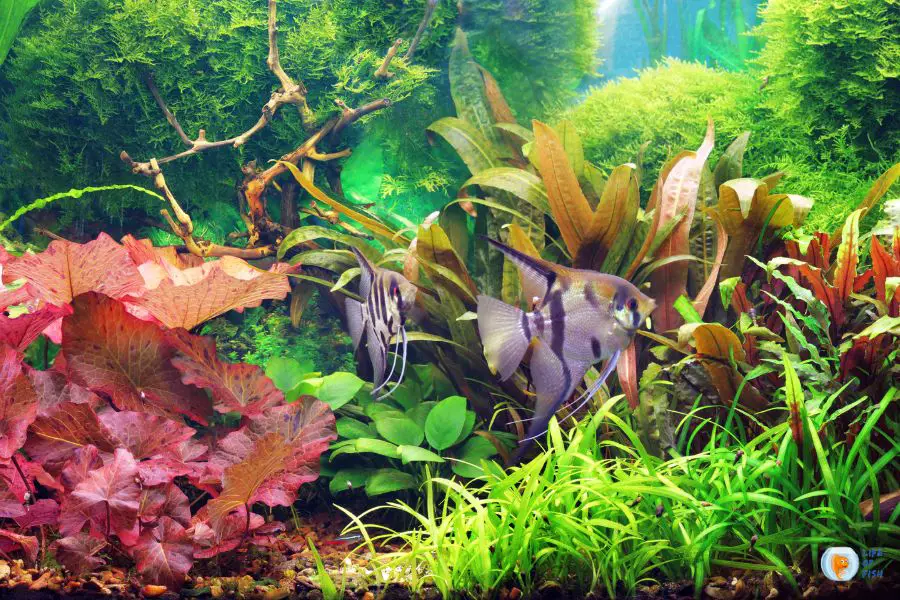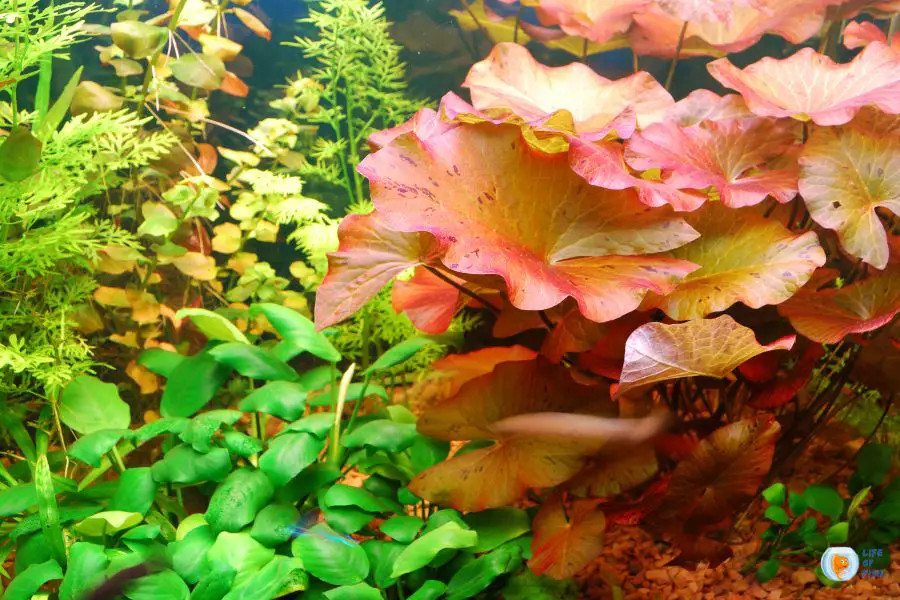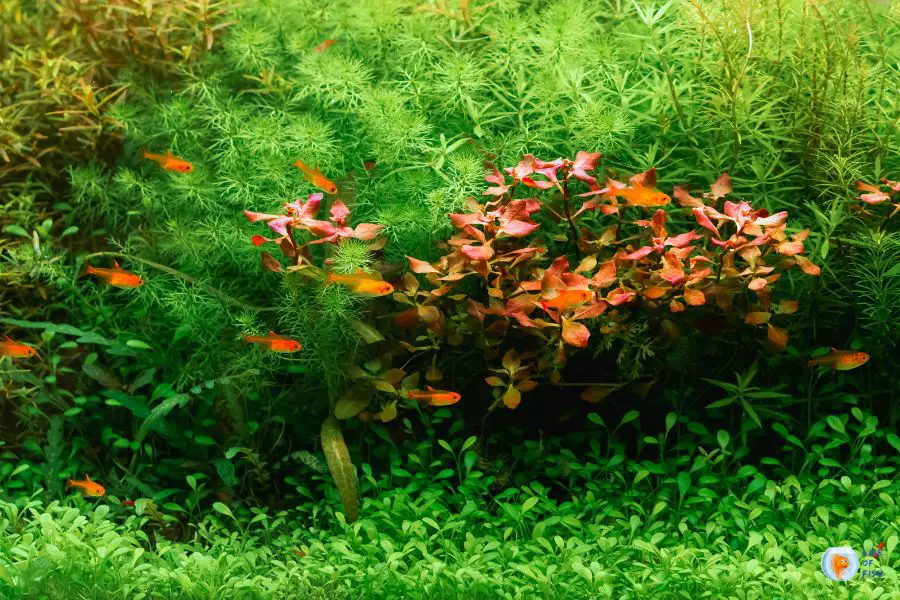A heavily planted tank refers to an aquarium that has an abundance of live plants growing in it. These plants provide a natural habitat for fish and other aquatic life. They also help to maintain the quality of the water. But, do fish like heavily planted tanks? This is the question that this blog post aims to answer.

Do fish like heavily planted tanks?
Jump To
Some fish like heavily planted tanks some do not. let’s find out which one likes and which one does not.
What Fish May Not Like Heavily Planted Tanks
Not all fish enjoy living in heavily planted tanks. Some fish prefer open spaces and do not like the feeling of being surrounded by plants. For example, predatory fish like cichlids, angelfish, and some species of tetras, might find it difficult to hunt in heavily planted tanks and prefer a more open environment.
What Fish Thrive in Heavily Planted Tanks
Many species of fish thrive in heavily planted tanks. Some of the most common fish that do well in these environments include tetras, guppies, mollies, and gouramis. These fish are peaceful in nature and enjoy hiding among the plants. A heavily planted tank can reduce stress levels in fish. It also provides them with a sense of security and a place to retreat when they need it.
The Effect of Different Types of Plants on Fish
It’s important to research the types of plants you want to include in your tank. Then make sure they are safe for the fish you plan to keep. Some plants release chemicals into the water that can be harmful to fish. While others can provide essential nutrients that they need to thrive.
Conclusion on Do Fish Like Heavily Planted Tanks
Whether fish like heavily planted tanks or not depends on the species of fish and the type of plants in the tank. As an aquarium owner, it’s important to research the needs of the fish you plan to keep and make sure their habitat is appropriate for their species.
If you’re thinking about setting up a heavily planted tank, make sure to do your research and choose the right species of fish for the environment. With the right setup, you can create a beautiful and thriving ecosystem that your fish will love

Recently asked question
Can you have more fish in a heavily planted tank
The size of the tank and the type of fish you have an impact. You may be able to keep more fish in a tank with a lot of plants since there are more places for fish to swim and hide. To ensure that you are not overcrowding the tank and have enough room to move around, it is still crucial to adhere to the general rule of thumb of one inch of fish per gallon of water.
Your fish may experience stress, illness, and other health issues as a result of overcrowding. Additionally, it’s critical to consider your tank’s bioload because densely planted tanks may produce additional waste in the form of decomposing plant material.
What is considered a heavily planted aquarium
An aquarium with a lot of live plants growing in is known as highly planted. There may be numerous taller plants that extend to the water’s surface, and the plants may cover much of the tank’s floor. A thickly planted tank aims to provide fish and other aquatic creatures with a lush, natural habitat.
In order for a tank to be described as thickly planted, the plants must be growing and flourishing rather than being carelessly and unnecessarily added to the tank. There should be a fair balance between the number of plants and the amount of light and nutrients they require to flourish in a tank that is densely planted. It’s critical to understand the particular requirements of the plants you intend to utilize in your tank and to provide them with the circumstances necessary for their growth.

Do aquarium plants oxygenate water?
Aquatic plants do oxygenate the water, yes. In reality, they are essential for preserving the water quality in an aquarium. Carbon dioxide (CO2) and light energy are important in photosynthesis to create oxygen (O2) and sugar. Fish and other aquatic life have access to oxygen thanks to the plants’ release of oxygen into the water.
Additionally contributing to the improvement of water quality, plants aid in the removal of extra carbon dioxide and other waste from the water. In addition, since the plants are assisting in maintaining clean, well-oxygenated water, a tank with a lot of plants may help to reduce the amount of artificial filtration and aeration required.
However, it’s crucial to remember that plants need oxygen at night when they undergo a process called respiration, which involves releasing carbon dioxide and utilizing oxygen. To guarantee that there is always enough oxygen for the fish and the plants, the tank must be adequately aerated.
Read Next : Can Dying Aquarium Plants be Harmful to Fish? Exploring the Risks
